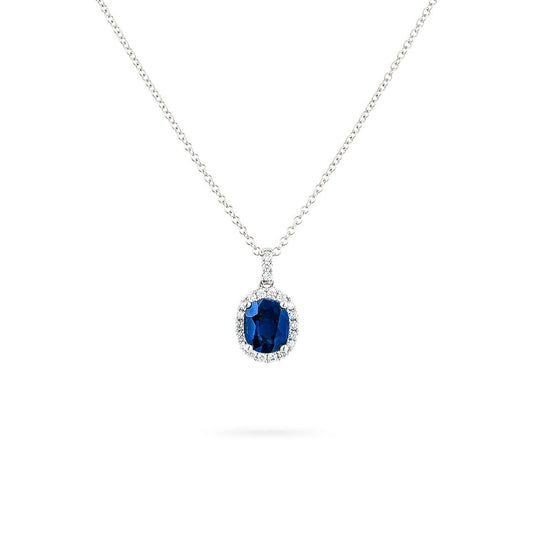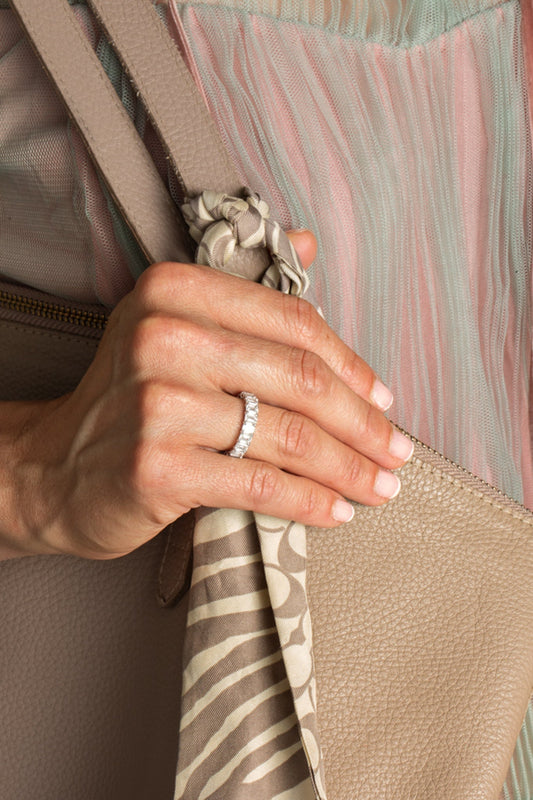Pairing Your Diamonds with Emeralds: Why Emeralds Make the Perfect Jewellery Companion
Emeralds, the stunning green to bluish-green variety of beryl, are often considered a jeweller’s best friend. Beryl, a mineral species, also includes other beautiful stones like aquamarine and beryl in various colours.
While gem experts have differing opinions on the exact shade that qualifies a stone as an emerald versus a more affordable green beryl, the distinction is typically based on colour intensity. Some in the trade may refer to any green beryl with chromium content as an emerald. However, most gemmologists, gem labs, and coloured stone dealers reserve the term “emerald” for stones with a deeper, richer green. If the colour is considered “too light,” it’s generally referred to as green beryl instead. Even among professionals, though, there is still some debate over where to draw the line for "lightness" in colour.
Emerald’s Timeless appeal: History and Allure
For centuries, emerald’s vibrant green hue has captivated hearts and sparked imaginations. Its name comes from the ancient Greek word smaragdus, meaning "green." In his Natural History from the first century AD, Pliny the Elder described emerald as “nothing greens greener.” He even noted that early lapidaries would use emeralds to soothe their eyes, finding comfort in the stone’s soft green colour, which helped relieve fatigue and strain. Even today, the colour green is recognized for its ability to reduce stress and ease eye strain.
While there are other green gemstones like tourmaline and peridot, emerald has long been the symbol of lush landscapes and the deepest greens. Ireland is known as the "Emerald Isle," Seattle is dubbed the "Emerald City," and Thailand’s revered Emerald Buddha, though carved from jadeite, stands as a symbol of the stone’s enduring significance.
The first known emerald mines were in Egypt, dating back to at least 330 BC and continuing into the 1700s. Cleopatra herself was famously enamoured with emeralds, often incorporating them into her royal jewellery.
Emerald, the most famous member of the beryl family, has been shrouded in legend. It was believed that placing an emerald under the tongue could grant the wearer the ability to foresee the future, reveal the truth, and protect against evil spells. It was also once thought to cure ailments such as cholera and malaria, and wearing an emerald was said to reveal the sincerity of a lover’s promises, as well as enhance one’s ability to speak eloquently.
In biblical legend, emerald was one of the four precious stones given by God to King Solomon, and these stones were said to grant him dominion over all of creation.
Emerald’s vivid green, reminiscent of spring’s fresh growth, makes it the perfect birthstone for May and a cherished gemstone for 20th and 35th wedding anniversaries.
Colombia: The Benchmark for the World's Finest Emeralds
In the 16th century, Spanish explorers plundered emeralds from the lands that are now Colombia, where the Incas had already been using the stone in their jewellery and religious rituals for centuries. Though the Spanish valued gold and silver above all, they traded emeralds for precious metals, introducing the stone’s allure to European and Asian royalty.
For over 500 years, Colombia has been renowned as the premier source of the world’s finest emeralds, setting the standard by which all others are judged. Among its famed mining regions, three stand out: Muzo, Chivor, and Coscuez. While each location yields a variety of emerald colours, they are known for distinct characteristics. Muzo is celebrated for producing rich, dark green emeralds with exceptional depth. Chivor is known for gems that are lighter in tone with a subtle bluish green hue. Meanwhile, Coscuez typically yields emeralds with a slightly yellowish green tint. Together, these regions contribute to Colombia’s legacy as the heart of the emerald world.
While Colombia remains the most famous source of emeralds, this cherished May birthstone is also found in several other parts of the world. In Brazil, the state of Minas Gerais and Capoeirana are the most important sources of emeralds.
Emeralds are also mined across Africa, with Zambia emerging as a major producer. The mines located in the Ndola Rural Restricted Area are especially known for yielding emeralds that are darker in tone with a bluish green hue. Other important sources include Pakistan and Afghanistan, both of which contribute significantly to the global emerald supply.
Caring for Your Emerald: Tips for Keeping It Radiant
Emeralds rank between 7.5 and 8 on the Mohs scale of hardness. While they’re fairly durable, they’re not as hard as diamonds—which score a perfect 10—so a little extra care goes a long way to keep them looking their best.
Most emeralds are treated to enhance their natural beauty. Here are two common methods used:
- Dyeing – Lighter-coloured emeralds with visible fractures may be dyed to bring out a more vibrant green.
- Fracture Filling – Surface-reaching fractures are often filled with oils, waxes, or resins to improve clarity and minimize visible flaws. The amount and type of filler can vary, and not all are equally stable.
Because of these treatments, emeralds deserve some special handling:
- Avoid sudden temperature changes (like those experienced in airplane cabins), heat exposure, and harsh chemicals.
- Skip the ultrasonic cleaner. The vibrations and heat can cause fillers to leak from the stone, potentially damaging its appearance.
- Steer clear of hot water, especially when washing dishes—heat can affect filled emeralds over time.
The best way to clean your emeralds? Use a soft brush, warm water, and mild soap, such as washing up liquid. Gently scrub and rinse thoroughly, then pat dry with a soft cloth. With a little care, your emeralds will continue to shine with their signature lush green glow for years to come.



